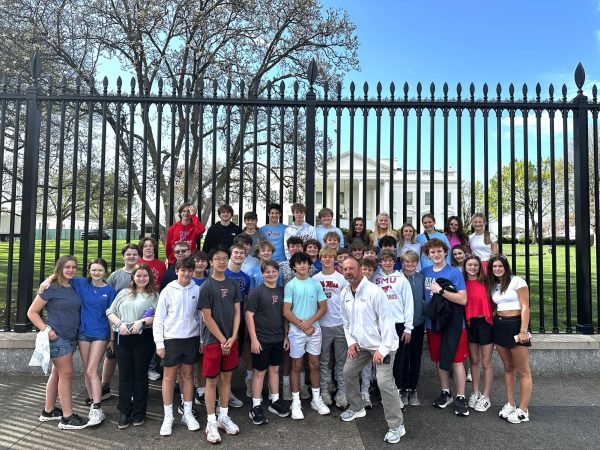AP Government students participate in mock elections
From Issue 7
Starting in the middle of December, the senior AP Government classes began a mock election to go along with the course study. Students in both classes got assigned a specific role and everyone had one job or duty. Some were the presidential candidates; others were media outlets and party leaders. With a wide variety of things going on, it made the next two months very interesting.

At the direction of senior history teacher Ms. LouAnn McKibben, each class had its own campaign and results. Both classes started building up their campaign or doing their job to affect the polls. In December, the candidates and their team had to come up with an introductory or “stump” speech to formally announce their candidacy. While that was going on, all of the media outlets were listening closely not only to report on them, but to get ready to endorse a certain candidate. After the endorsements and speeches, the candidates were tasked with making ads. Some were made in support of one candidate while others were made to break down the other candidate in hopes of boosting themselves.
The endorsement turned out to be one of the most important parts of the whole race, giving those who were endorsed a great lead in the polls. However, that was not the only big event that happened. After about a week after the endorsements, multiple scandals were released about certain candidates, hurting those who had any sort of lead and crushing the hopes of those in the middle of the race.
Towards the end of the race, each class held a formal debate, ran by certain members of the media who helped shaped the questions. Some questions were answered simply while others caused heated discussions. While the candidates went back and forth on the topics, the media and audience listened closely to any flaws that may have come from the answers of the candidates. Each debate lasted a little under an hour, and every minute was used by the candidate to form their positions on the very controversial topics that were brought up by the media.
After the debate came both parties’ primary elections. This was the closer of the two races due to the fact that there were more options to choose from. While the race may have seemed to be close, the winners of both parties were fairly obvious. There was not really any doubt of who was going to win the elections. In the 3rd carrier class, Mike Lewis won for the Republicans and Cammie Harrison won for the Democrats. In the 4th carrier class, James Tarskyn won on the Republican ballot, and Larry Anderson won for the Democrats.
For the candidates that lost the primary, the project seemed to be over, but that could not be further from the truth. Those candidates who represented the swing states were the deciding factor for the election. In the 3rd carrier class, Mike Lewis carried both swing states on his way to the oval office, and in the 4th carrier class, after splitting the swing states, President James Tarskyn (a.k.a Donald Trump) returned for his second term as President.
This project was used to show the students how elections really work and all the work behind them as opposed to just reading about it from a book. From the speeches to the ads and the financial aspects, this project gave the students a good look, on a small scale, of what the elections are like.







